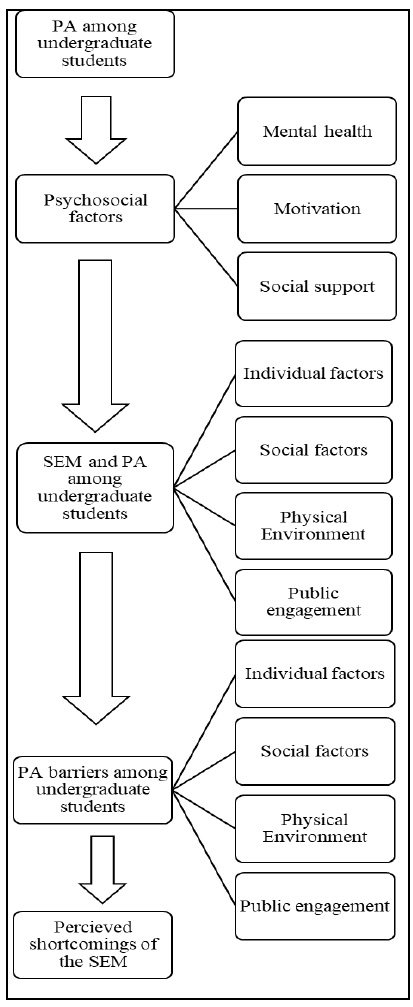The influence of physical activity on the mental health of high school students: the chain mediating effects of social support and self-esteem – Nature

Report on the Influence of Physical Activity on Adolescent Mental Health: A Framework for Achieving Sustainable Development Goals
This report analyzes the mechanisms through which physical activity influences the mental health of high school students, with a specific focus on the mediating roles of social support and self-esteem. The findings are framed within the context of the United Nations Sustainable Development Goals (SDGs), particularly SDG 3 (Good Health and Well-being) and SDG 4 (Quality Education).
1. Introduction: Addressing Adolescent Mental Health as a Core Component of Sustainable Development
The increasing prevalence of mental health challenges among adolescents, including depression and low life satisfaction, poses a significant barrier to global progress. This issue directly impacts the achievement of SDG 3 (Good Health and Well-being), which aims to ensure healthy lives and promote well-being for all at all ages, and SDG 4 (Quality Education), as mental well-being is a prerequisite for effective learning and holistic development. This study investigates physical activity as an accessible and effective intervention. It examines the psychological pathways—specifically through social support and self-esteem—by which physical activity can improve mental health outcomes, thereby offering a practical strategy for advancing the SDGs.
2. Research Methodology
The study employed a quantitative, cross-sectional design to explore the relationships between physical activity, social support, self-esteem, and mental health indicators (life satisfaction and depression).
- Participants: A random sample of 484 high school students (309 males, 175 females) from China participated in the study.
- Data Collection: An online survey was administered, utilizing established and validated scales:
- Physical Activity Rating Scale (PARS-3)
- Multidimensional Scale of Perceived Social Support (MSPSS)
- Rosenberg Self-Esteem Scale (RSES)
- Adolescent Self-Rating Scale (Depression Dimension)
- Satisfaction with Life Scale (SWLS)
- Data Analysis: A chain mediation model was tested using the PROCESS macro for SPSS to analyze the direct and indirect effects. The analysis controlled for demographic variables to ensure robustness.
- Ethical Considerations: The research adhered to the principles of the Declaration of Helsinki, with ethical approval obtained and informed consent provided by all participants or their legal guardians.
3. Key Findings: Pathways to Well-being
The analysis confirmed that physical activity is significantly correlated with improved mental health. However, its effects are not direct but are fully mediated by psychological and social factors, providing a clear pathway for interventions aimed at SDG 3.4 (promote mental health and well-being).
3.1. Correlation with Mental Health Outcomes
- Physical activity was significantly and positively correlated with life satisfaction.
- Physical activity was significantly and negatively correlated with depression.
3.2. The Chain Mediation Effect
The study revealed that the influence of physical activity on mental health operates through a sequential chain of mediators. The direct effect of physical activity on both life satisfaction and depression was non-significant, indicating that its impact is channeled entirely through social support and self-esteem.
The process can be summarized as: Physical Activity → Increased Social Support → Enhanced Self-Esteem → Improved Mental Health (Higher Life Satisfaction & Lower Depression).
Three distinct indirect pathways were identified:
- Pathway 1 (via Social Support): Physical activity enhances perceived social support, which in turn boosts life satisfaction and reduces depression. This was the most dominant pathway.
- Pathway 2 (via Self-Esteem): Physical activity improves self-esteem, which subsequently leads to better mental health outcomes.
- Pathway 3 (Chain Mediation): Physical activity fosters social support, which then builds self-esteem, and this enhanced self-esteem ultimately improves mental health. This sequential pathway was statistically significant for both life satisfaction and depression.
4. Discussion and Implications for Sustainable Development
The findings provide robust evidence that promoting physical activity is a strategic imperative for achieving key Sustainable Development Goals. The identified mechanisms offer a blueprint for designing effective, evidence-based interventions.
4.1. Advancing SDG 3: Good Health and Well-being
This research underscores that physical activity is more than a biological intervention; it is a psychosocial tool for building resilience. To advance Target 3.4, policies should focus not just on encouraging exercise but on creating environments where physical activity fosters social connection and self-worth.
- Intervention Focus: Promote team sports and group-based physical activities that naturally build social networks and support systems.
- Policy Recommendation: Educational and community health programs should integrate modules on the psychological benefits of exercise, emphasizing social interaction and personal achievement over competition alone.
4.2. Supporting SDG 4: Quality Education
A student’s ability to learn is intrinsically linked to their mental state. By improving mental well-being, physical activity directly contributes to a more effective and inclusive educational environment, aligning with SDG 4.
- For Educators: Physical education should be leveraged as a tool for psychological development. Teachers can create a supportive atmosphere that provides positive feedback and encourages cooperation, thereby enhancing student self-esteem.
- For Schools: Schools should ensure adequate time and resources for physical education and extracurricular sports, recognizing them as essential components of the curriculum that support academic and personal growth. Integrating physical activity with mental health education can create a holistic support system for students.
4.3. Fostering Partnerships and Reducing Inequalities (SDG 17 & SDG 10)
Implementing these findings requires a multi-stakeholder approach, reflecting the spirit of SDG 17 (Partnerships for the Goals). Collaboration between schools, parents, community organizations, and policymakers is essential.
- Collaborative Action: Schools and parents should work together to encourage a balanced routine that includes physical activity. Policymakers must support this by ensuring schools are equipped with the necessary facilities and trained personnel.
- Reducing Inequalities (SDG 10): Physical activity is a low-cost, highly accessible intervention that can help reduce health disparities. Ensuring equitable access to safe spaces and programs for physical activity, regardless of socioeconomic background, is crucial for promoting mental health equity among all adolescents.
5. Limitations and Future Directions
While insightful, the study has limitations that suggest directions for future research to further inform SDG-related policies.
- The cross-sectional design prevents causal inference. Longitudinal or experimental studies are needed to confirm the causal chain from physical activity to mental health.
- The sample was limited to Chinese high school students. Future research should include diverse cultural and socioeconomic contexts to enhance the generalizability of the findings.
- Reliance on self-report data may introduce bias. Future studies could incorporate objective measures (e.g., accelerometers for activity) and multi-source feedback (from parents or teachers).
6. Conclusion
This study validates a critical pathway through which physical activity enhances adolescent mental health: by building social support, which in turn fosters self-esteem. These findings provide a clear and actionable framework for policymakers, educators, and families to leverage physical activity as a strategic tool to achieve SDG 3 (Good Health and Well-being) and SDG 4 (Quality Education). By focusing on creating supportive environments that cultivate both social connection and self-worth, we can effectively promote the mental resilience and holistic development of the next generation.
1. Which SDGs are addressed or connected to the issues highlighted in the article?
The primary Sustainable Development Goal (SDG) addressed in the article is:
-
SDG 3: Good Health and Well-being
This goal is central to the article, which focuses entirely on the mental health of high school students. The text explicitly investigates “mental health issues among high school students,” such as anxiety and depression, and explores interventions to promote well-being. The introduction highlights the urgency of the issue by stating, “Approximately 14% of adolescents worldwide experience mental disorders,” and notes that in China, “as many as 40% of high school students exhibit symptoms of depression.” The research aims to provide “valuable insights for designing more effective mental health interventions for high school students,” directly aligning with the objective of ensuring healthy lives and promoting well-being for all at all ages.
2. What specific targets under those SDGs can be identified based on the article’s content?
Based on the article’s focus on mental health, the following specific target under SDG 3 is directly relevant:
-
Target 3.4: By 2030, reduce by one-third premature mortality from non-communicable diseases through prevention and treatment and promote mental health and well-being.
The article directly contributes to the “promote mental health and well-being” component of this target. The entire study is designed to understand the relationship between physical activity and mental health, measured through “life satisfaction” (positive mental health) and “depression levels” (negative mental health). The research explores mechanisms (social support, self-esteem) to improve mental health outcomes. Furthermore, the article touches upon the prevention of premature mortality by noting that “Negative mental health may result in serious outcomes, including truancy, self-harm, and even suicide.” By investigating ways to reduce depression and improve life satisfaction, the study addresses the core aims of Target 3.4.
3. Are there any indicators mentioned or implied in the article that can be used to measure progress towards the identified targets?
Yes, the article mentions and utilizes several indicators that align with measuring progress towards Target 3.4.
-
Suicide Mortality Rate (Implied, relates to Indicator 3.4.2)
While the study does not measure suicide rates directly, it explicitly identifies suicide as a severe consequence of poor mental health. The introduction states that positive mental health “reduces the risk of suicide.” This implies that a reduction in suicide rates would be a key indicator of successful mental health interventions, aligning with the official SDG indicator 3.4.2 (Suicide mortality rate).
-
Prevalence of Mental Health Disorders
The article uses the prevalence of mental health issues as a key indicator of the problem’s scale. It cites statistics such as “Approximately 14% of adolescents worldwide experience mental disorders” and the high prevalence of depression symptoms (40%) among Chinese high school students. Tracking this prevalence is a direct way to measure progress in promoting mental health.
-
Measures of Depression and Life Satisfaction
The study uses specific psychometric scales as direct indicators to measure mental health outcomes:
- Depression Levels: The “depression dimension of the Youth Self Report (YSR)” is used to assess negative mental health. A decrease in scores on this scale would indicate progress.
- Life Satisfaction: The “Satisfaction with Life Scale (SWLS)” is used to measure positive mental health and well-being. An increase in life satisfaction scores would signify improvement.
-
Levels of Physical Activity, Social Support, and Self-Esteem
The article proposes that physical activity, social support, and self-esteem are crucial factors for improving mental health. The study measures these using specific tools, which can serve as process indicators to track the implementation of interventions:
- Physical Activity: Measured by the “revised Physical Activity Rating Scale (PARS-3).” Increasing the level of physical activity is presented as a key intervention strategy.
- Social Support: Measured by the “Multidimensional Scale of Perceived Social Support (MSPSS).”
- Self-Esteem: Measured by the “Rosenberg Self-Esteem Scale (RSES).”
Monitoring these intermediate factors is essential for evaluating the effectiveness of the mental health promotion strategies discussed in the article.
4. Create a table with three columns titled ‘SDGs, Targets and Indicators’ to present the findings from analyzing the article.
| SDGs | Targets | Indicators |
|---|---|---|
| SDG 3: Good Health and Well-being | Target 3.4: By 2030, reduce by one-third premature mortality from non-communicable diseases through prevention and treatment and promote mental health and well-being. |
|
Source: nature.com

What is Your Reaction?
 Like
0
Like
0
 Dislike
0
Dislike
0
 Love
0
Love
0
 Funny
0
Funny
0
 Angry
0
Angry
0
 Sad
0
Sad
0
 Wow
0
Wow
0



























































.jpg?#)
















